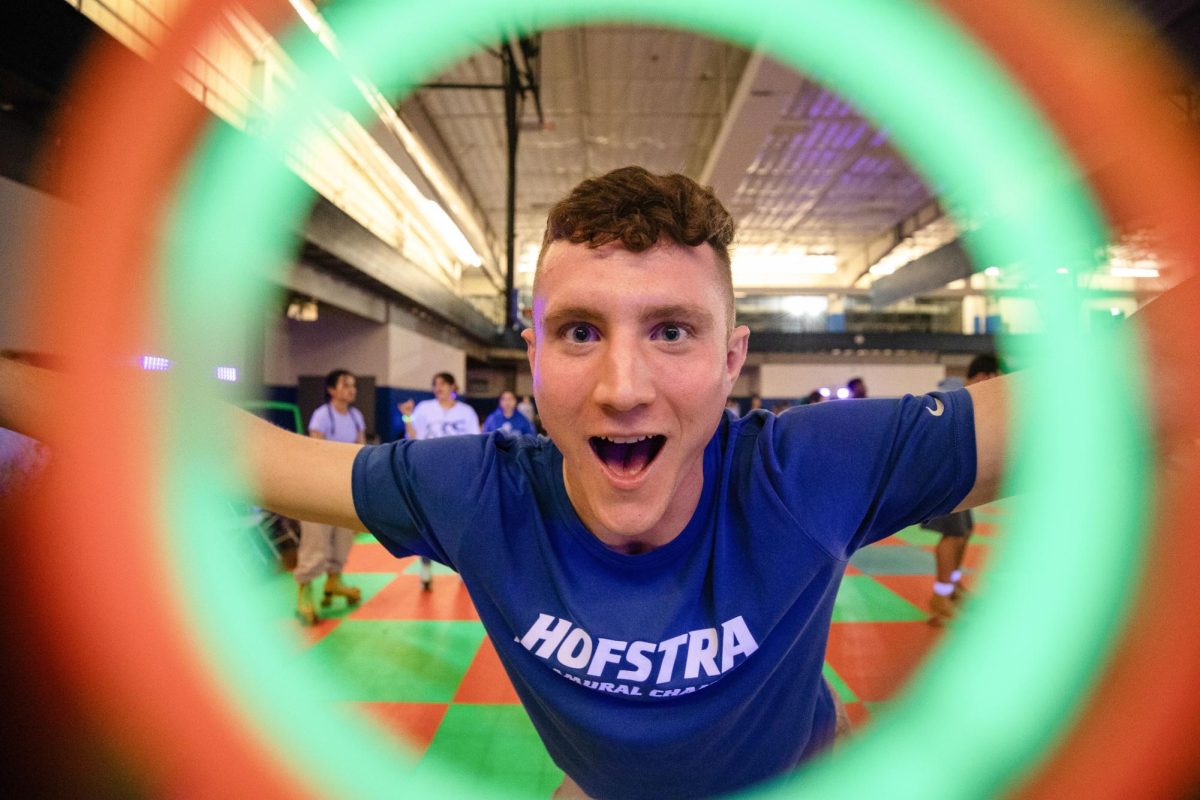The Hofstra Cultural Center and the Department of Philosophy held “The Aesthetic Brain” with Dr. Anjan Chatterjee, professor at the Perelman School of Medicine at the University of Pennsylvania, on Wednesday, Nov. 9. Chatterjee’s presentation explained the ideas in his most recent book “The Aesthetic Brain: How We Evolved to Desire Beauty and Enjoy Art.”
A cognitive neuroscientist by training, Chatterjee’s talk revolved around the brain’s response to beauty. Specifically, the talk covered facial beauty, automatic responses to beauty and the contextual variability of values while raising questions about the evolutionary utility of aesthetic experiences and their relation to social structures today.

Professor Anthony Dardis from the Department of Philosophy said, “A student from the neuroscience club two or three years ago said, ‘Could we bring in a guest?’ I studied some neuroscience with Dr. Chatterjee and so I said, ‘Hey why don’t we invite him?’ because I saw him talk about his book. There were some accidents. He was going to come here two years ago, there was a blizzard he couldn’t make it, there was a break. So now this is that event.”
Chatterjee began with a history of empirical aesthetic research, starting in the late 19th century. Before then, aesthetics study had been largely in the realm of philosophy.
The father of experimental aesthetics, Gustav Fechner penned a document that said, “It was possible to have an aesthetics science that approached aesthetics from below.”
Chatterjee further explained, “And what he meant by from below was that you could have a data driven science of aesthetics in contrast with what had been historically the case which he described as an aesthetics from above which might be regarded as philosophical aesthetics.”
The first leg of Chatterjee’s presentation showcased the three parameters associated with facial beauty in particular: genetic diversity in appearance, symmetry and sexual dimorphism. These boundaries create a system of evolutionary preference that dictate what we see as generally beautiful in faces today.
Later on, Chatterjee described the “beauty is good” stereotype that arises as a result of these evolutionary parameters. He explained, “Just social scientists have found this, that is attractive people receive all kinds of advantages in life. People who are attractive are typically thought of as more intelligent [and] more trustworthy. They’re given higher pay. If they do bad things they’re given lesser punishments. So what people have looked at is trying to say, is it the case that there is a common neural activity of beauty and good and could this be the biological basis for this kind of reflexive association.”
As faces are representations of beauty accessible in everyday life, examining their significance from a neurological perspective allows scientists to create a framework from a constant that is then applicable to the entire study of multifarious beauty, whether it be in interior design or abstract art.
Responses to objects of beauty are automatic, as measured in the empirical research of brain regions presented by Chatterjee, but the context of the object wields primary influence in the viewers’ sense of pleasure.
In one experiment, the same painting was presented to different participants. One person was told it came from a famous art gallery and the others were told it was randomly generated by a computer. Unequivocally, subjects with the former information marked higher on neurological signs of viewing pleasure. As Chatterjee said, “People are variable in what they like.”
Although aesthetic neuroscience is a relatively new field of study, Chatterjee referenced several experiments in his presentation, many of them his own, in concise and informative structures.
Kirsten Rickershauses, a sophomore English major said, “I think it was really easy to understand and I think that was surprising for this sort of lecture because two neuroscience philosophy things I went to last year I could not follow at all – really easy to follow.”
In a question and answer session following the talk, an art teacher asked about the continued marginalization and lack of support for art education in schools.
Chatterjee responded by noting the similar lack of funding for aesthetics-based neuroscience. His own research in the field has been incorporated in larger projects that received funding.
“Research in the field has stagnated because of the studies’ lack of immediately evident utility, despite the ubiquity of aesthetics experience.” he said.
“The experience of beauty and aesthetics experiences I would argue, or I believe, is a fundamental core human experience and something that has not been studied that much. And so there’s a kind of peculiarity at the fact that here is something fundamental we all care about with varying degrees,” Chatterjee said. “You care about what your hair looks like, what your clothes are, where your apartment is, what you put up on the walls. This is something that affects most of us in a deep, deep way and we just don’t know that much about it.”













